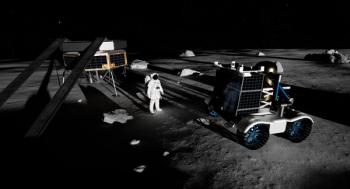
Spectroscopy Magazine Commemorates the 54th Anniversary of the First Moon Walk
On July 20th, 1969, American astronauts Neil Armstrong and Buzz Aldrin made history by becoming the first humans to land on the moon. Today, 54 years later, Spectroscopy magazine highlights how spectroscopy is playing a role in advancing space exploration.
In the late 1950s and 1960s, the United States found itself locked in a Cold War with the Soviet Union. To assert dominance, both countries engaged in many efforts to usurp their rival, including psychological warfare, espionage, embargoes, nuclear arsenal development, and technological competitions (1).
One of these technological competitions focused on space exploration. Space exploration became synonymous with national security, and both countries, as a result, turned their attention to the skies (1).
Many monuments of human achievement were founded during this decade, but perhaps the greatest achievement came on July 20, 1969–– when the Apollo 11 mission commissioned by the National Aeronautics and Space Administration (NASA) successfully landed on the moon’s surface (2).
Apollo 11 was the first mission that saw humans land on the moon and walk on its surface for the first time. Spectroscopy played a pivotal role in making this event, and other important space exploration missions and studies, possible.
Spectroscopy has a long history of contributing to not only the Space Race back in the 1960s, but also to current space exploration studies. The knowledge that has been gathered through spectroscopic techniques has been used toadvance our knowledge of the world beyond Earth. Spectroscopy has played a crucial role in international space missions, enabling scientists to analyze the composition, temperature, and physical properties of celestial objects (3). From the study of exoplanet atmospheres to the analysis of distant galaxies, spectroscopic techniques have provided valuable insights into the universe's mysteries. Instruments like the Hubble Space Telescope, Chandra X-ray Observatory, and the James Webb Space Telescope have utilized spectroscopy to unravel the secrets of the cosmos and deepen our understanding of the vast expanse beyond our planet (3).
Spectroscopy has been instrumental in analyzing mineral samples from meteorites, the Moon, and Mars, offering valuable insights into the geological composition of these celestial bodies. By studying the interaction of light with minerals, spectroscopic techniques allow scientists to identify specific minerals and their chemical makeup. Through spectral signatures, scientists have identified minerals like olivine, pyroxene, and feldspar in meteorites, providing clues about their origins and formation processes (3). On the Moon, spectroscopic analysis of lunar samples has revealed the presence of minerals such as basalt and anorthosite, helping to piece together the Moon's geological history (3). Spectroscopic data from Mars rovers and orbiters have unveiled the presence of minerals like hematite, clay minerals, and sulfates, indicating past water activity and potential habitability (3). Overall, spectroscopy has been invaluable in unraveling the mineralogical mysteries of these celestial bodies, advancing our understanding of the solar system's geological diversity (3).
In honor of this historic day in history, the editors of Spectroscopy are spotlighting research in the field of spectroscopy that has helped advance space exploration. Below, you will find three landing pages featuring studies, feature articles, and peer-reviewed research on outer space, Mars, planetary bodies, and meteorites.
References
(1) Davis, M. The Space Race.
(2) History.com, Moon Landing 1969.
(3) NASA, NASA website.
Newsletter
Get essential updates on the latest spectroscopy technologies, regulatory standards, and best practices—subscribe today to Spectroscopy.



